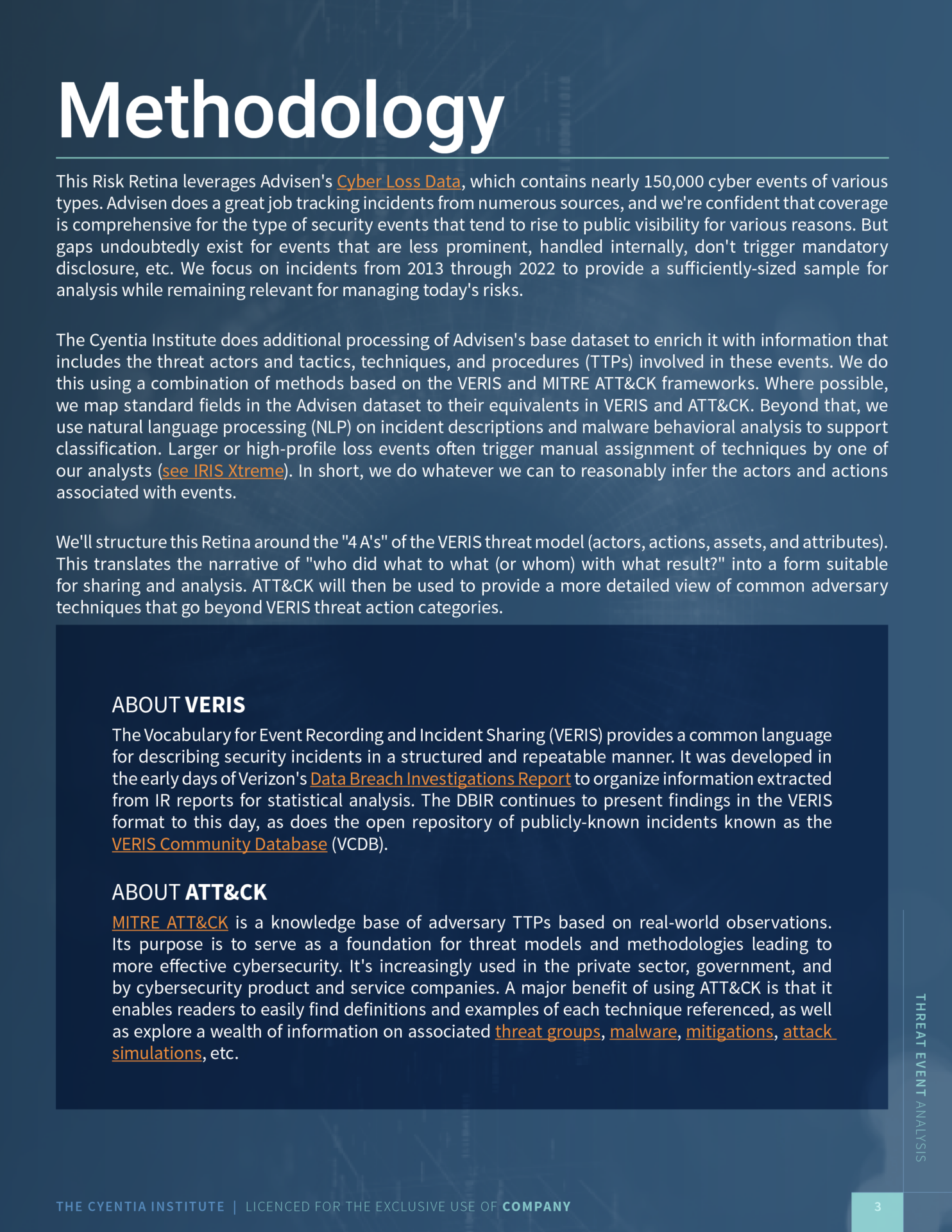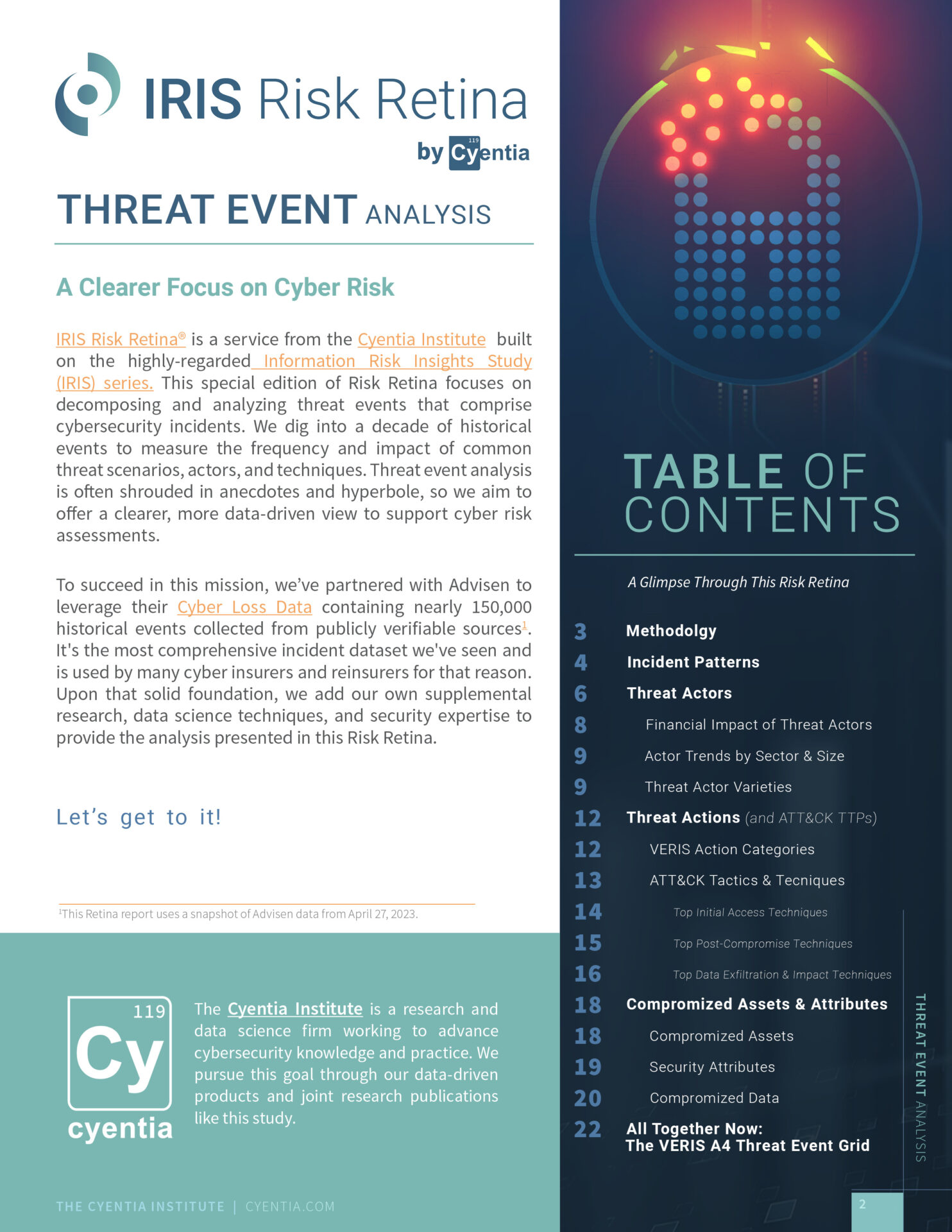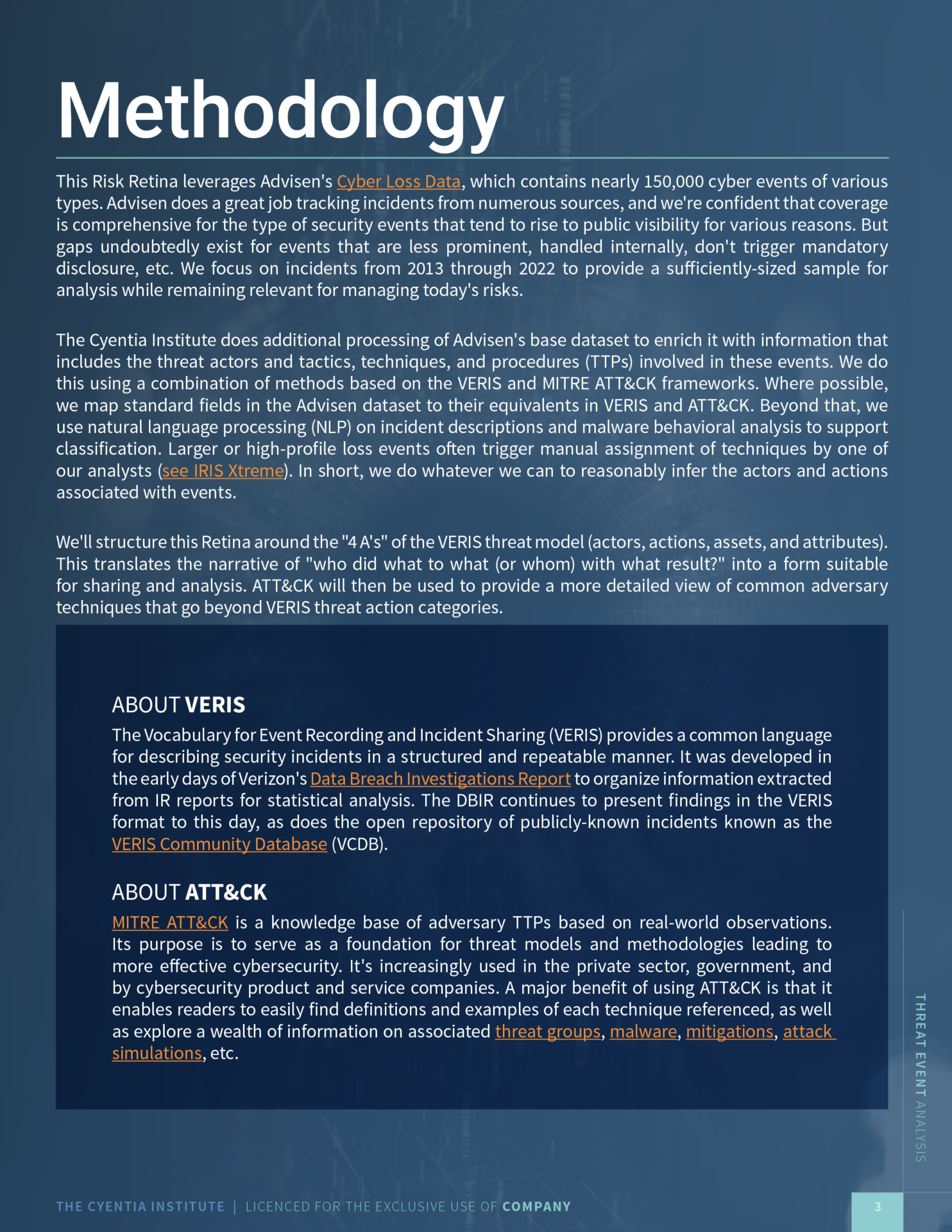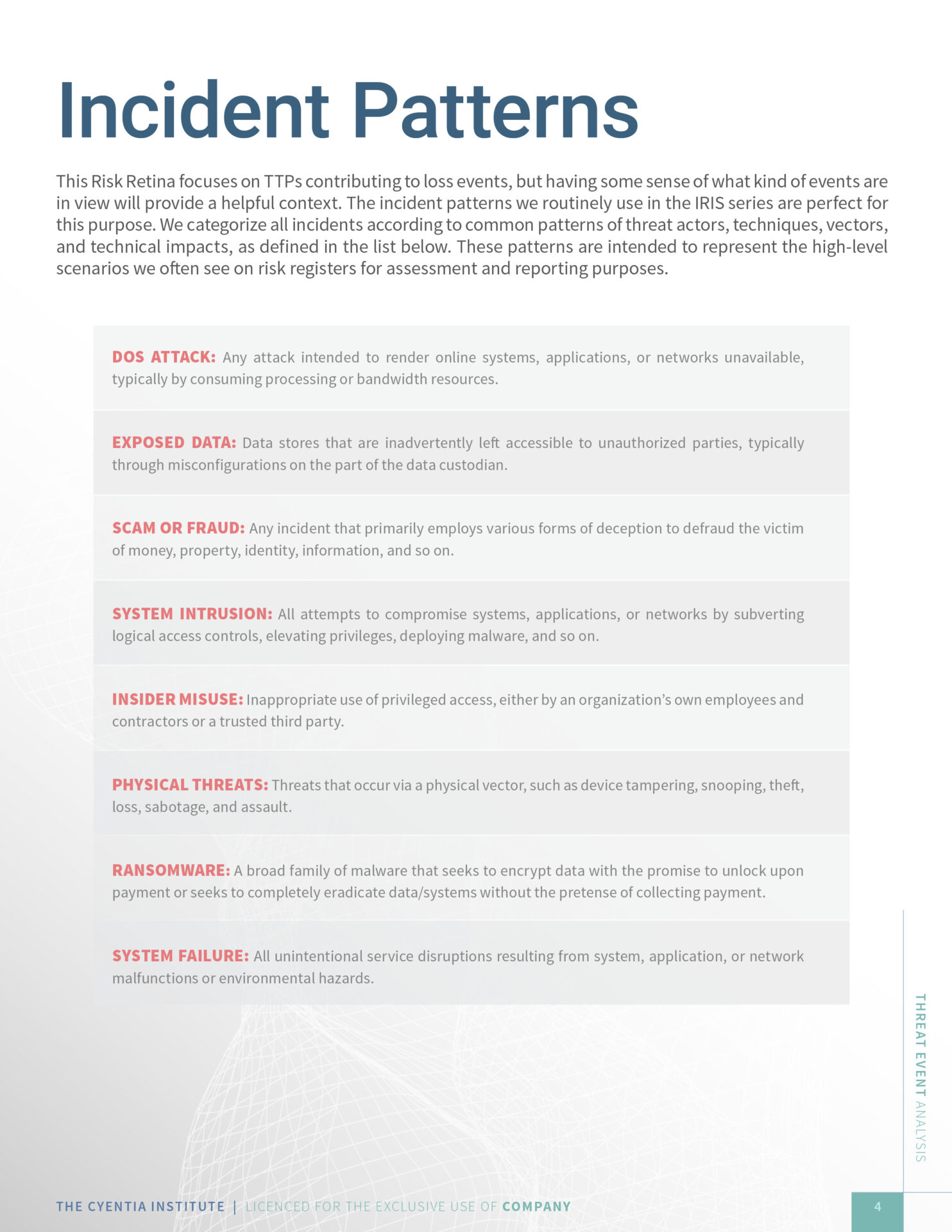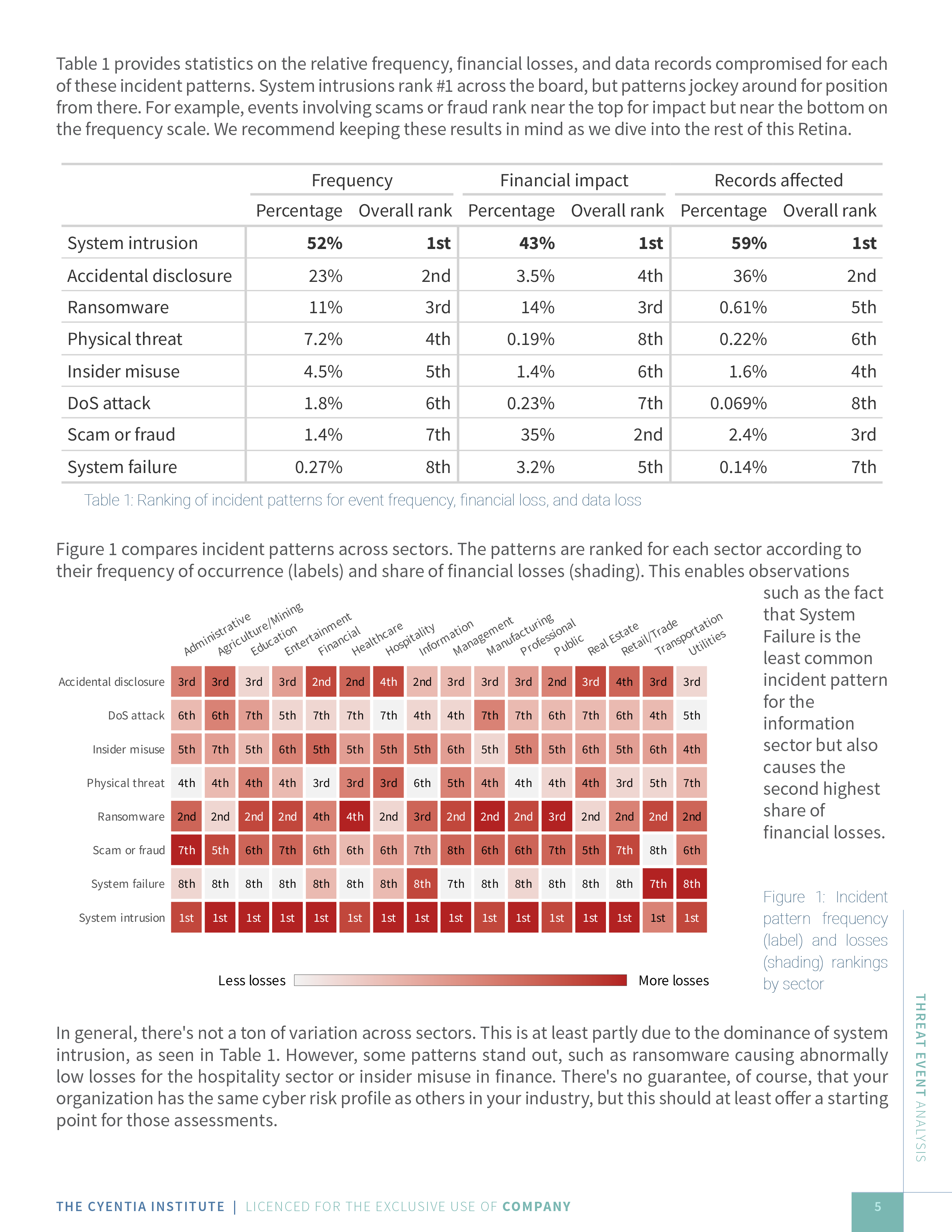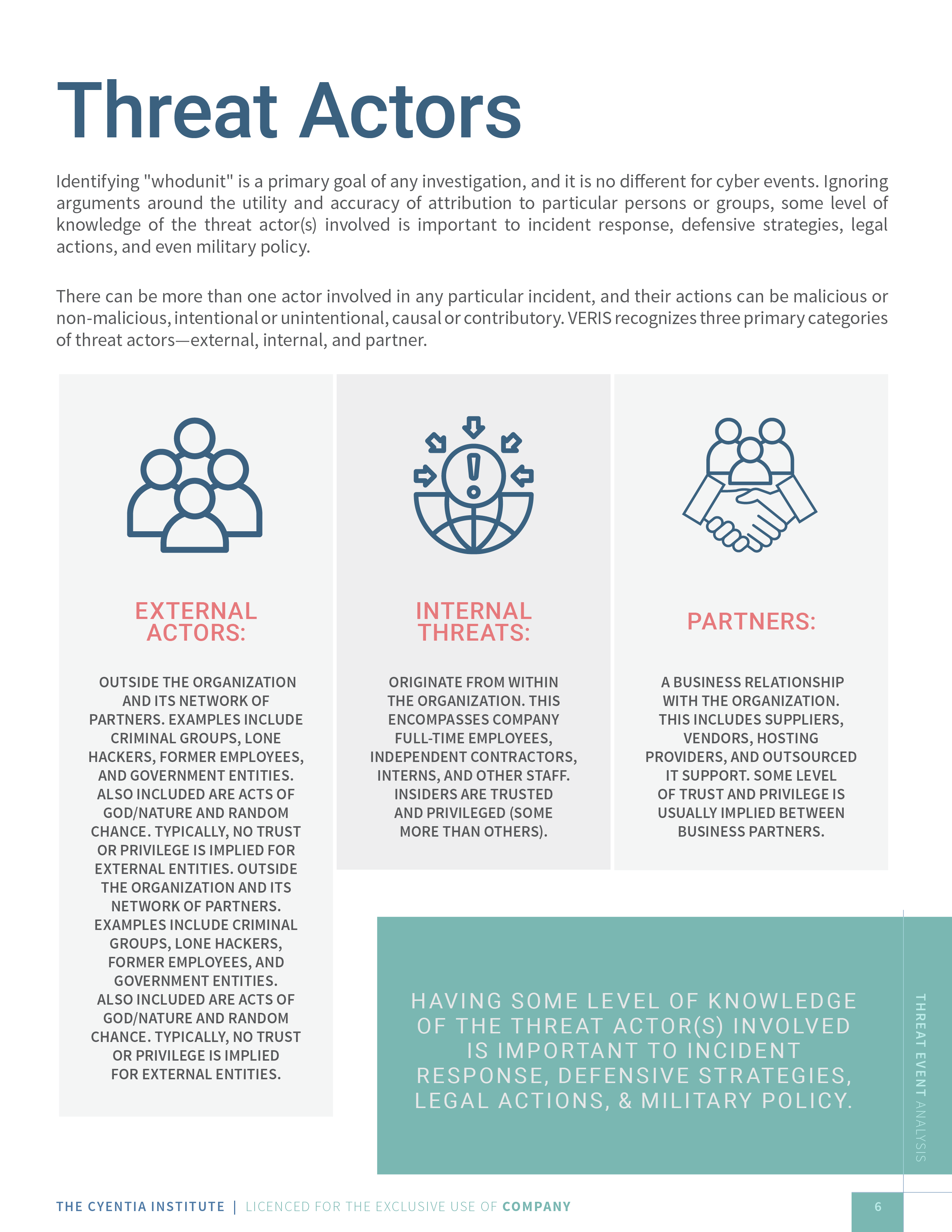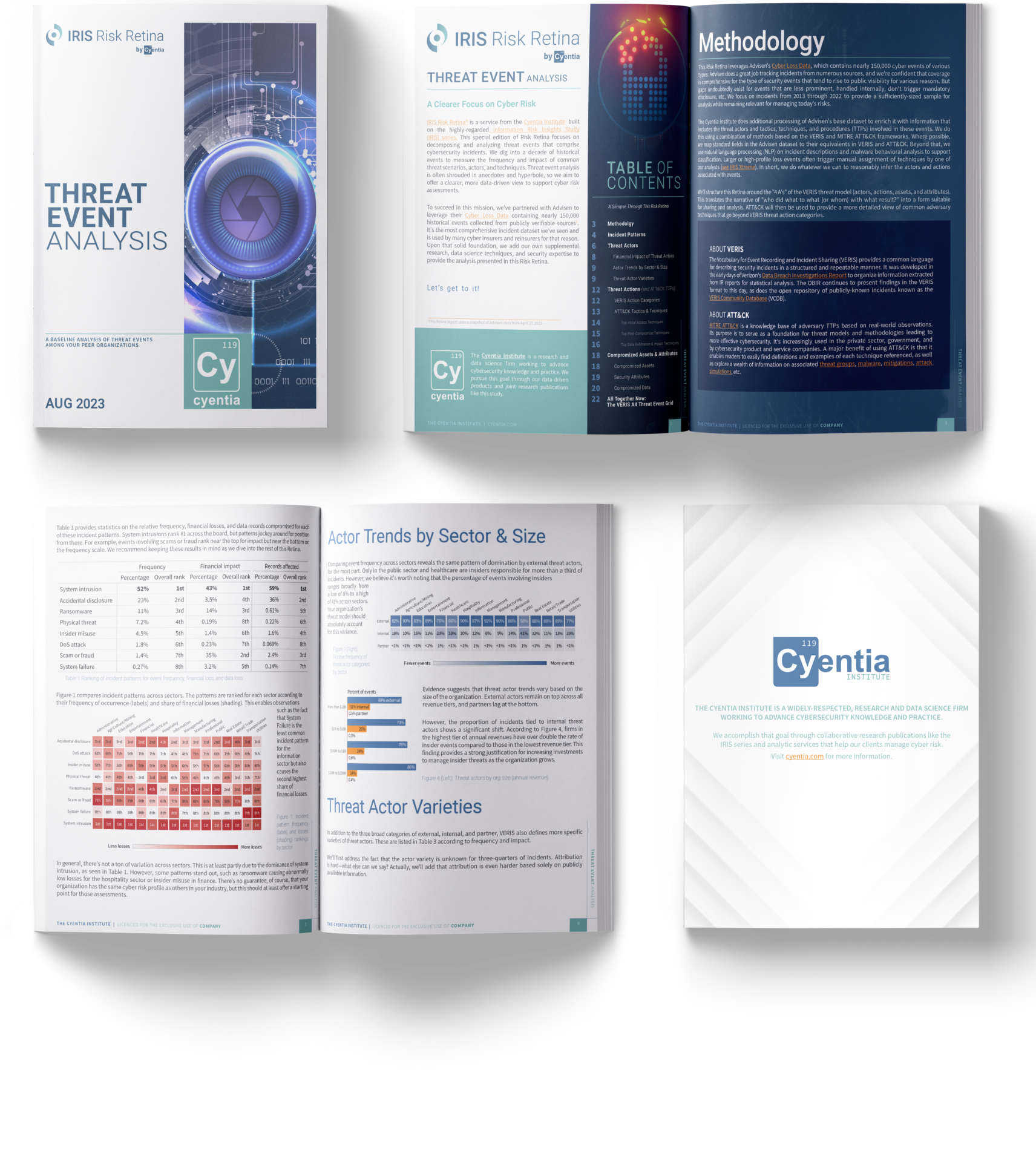
In our previous article, Exploring Common Attack Techniques, Their Impact in Cybersecurity & the Criticality of Expert Analysis we explored the MITRE ATT&CK framework, its significance in the world of cybersecurity and the criticality of having up-to-date data and information on your side. Now, let’s take it a step further by introducing the Information Risk Insights Study’s Risk Retina Threat Event Analysis and how it’s designed to complement and enhance your understanding of cyber threats.
A Closer Look at Risk Retina Threat Event Analysis
The Risk Retina Threat Event Analysis is a powerful tool developed by the Information Risk Insights Study (IRIS) that offers a more granular view of cyber threats. While the MITRE ATT&CK Framework provides a comprehensive overview of attack techniques, the Risk Retina Threat Event Analysis dives deeper into threat events, providing a clearer picture of specific incidents.
Here’s how it works:
- Event Identification: The process begins with the identification of significant threat events. These events could range from a data breach to a malware outbreak or a phishing campaign. Each event is meticulously documented and categorized.
- Data Collection: Data related to each threat event is collected, including details about the attack vector, the targeted systems or assets, and the impact on the affected organization(s).
- Contextualization: One of the strengths of the Risk Retina Threat Event Analysis is its ability to provide context. It’s not just about the “what” but also the “how” and “why” of a threat event. This contextual information is invaluable for understanding the motivations behind cyber attacks.
- Cross-Referencing with MITRE ATT&CK: The analysis doesn’t stop at event identification. The Risk Retina Threat Event Analysis cross-references these events with the MITRE ATT&CK Framework, pinpointing which techniques and tactics were employed in each incident.
How It Enhances Your Understanding
Now that we have a grasp of how the Risk Retina Threat Event Analysis works let’s explore how it enhances your understanding of cyber threats:
- Precision in Threat Detection: By focusing on specific threat events, this analysis provides a level of precision that can be lacking in broader threat intelligence reports. Instead of sifting through mountains of data, security professionals can zero in on the events that matter most to their organization.
- Actionable Insights: The contextual information provided by the Risk Retina Threat Event Analysis transforms data into actionable insights. It answers questions like “What was the attacker’s motive?” and “How did they gain access?” Armed with this knowledge, organizations can take targeted actions to bolster their defenses.
- Threat Mitigation: Understanding which techniques and tactics were employed in a threat event is crucial for effective threat mitigation. It allows security teams to not only address the immediate incident but also proactively fortify their defenses against similar attacks in the future.
- Risk Assessment: For risk assessment, this analysis is a game-changer. It enables organizations to evaluate the specific threats they face, their potential impact, and the likelihood of occurrence. This, in turn, informs risk management strategies and resource allocation.
- Strategic Planning: The Risk Retina Threat Event Analysis is more than just a repository of data; it’s a strategic compass for organizations navigating the complex realm of cybersecurity. By distilling insights from tens of thousands of incidents, it provides a deep understanding of evolving threats. This understanding plays a vital role in strategic planning, helping organizations identify trends and patterns in cyber threats. Armed with this knowledge, organizations can tailor their security strategies to effectively combat the ever-evolving threat landscape.
Analyzing Threat Events with the VERIS A4 Threat Event Grid
In cybersecurity, understanding the risk factors behind incidents is crucial. While dissecting actors, actions, assets, and attributes separately provides valuable insights, these elements rarely operate in isolation. To gain a holistic view of cybersecurity incidents, the VERIS A4 Threat Event Grid is a powerful tool.
This grid, offers a comprehensive overview of key threat events derived from the extensive analysis conducted in our Risk Retina Threat Event Analysis. In essence, each cell in this grid represents a unique combination of the four “A’s” – Actors, Actions, Assets, and Attributes.
Imagine the grid as a map, where each intersection tells a story. For instance, in the top-left corner, you’ll find threat events that involve external actors employing hacking techniques to compromise the confidentiality of a server within the incident scenario. The shading in each cell corresponds to the frequency of these threat events across the analyzed incidents.
What does this grid reveal? Well, it shows us where the brightest hotspots are, indicating the most frequent and impactful threat events. In our analysis, we’ve observed and analyzed the prominent hotspots on this grid. This information can be a game-changer for risk management; serving as a beacon, guiding organizations to assess the level of risk posed by specific threat events within their own environments. By understanding the significance of these threat events, organizations can prioritize controls and security measures that target these specific areas.
We’d like to wish you good luck, but in the world of cybersecurity risk management, luck isn’t part of the equation. Instead, it’s about informed decisions, proactive defenses, and staying one step ahead of the ever-evolving threat landscape.
Unlocking Insights with the Risk Retina Threat Event Analysis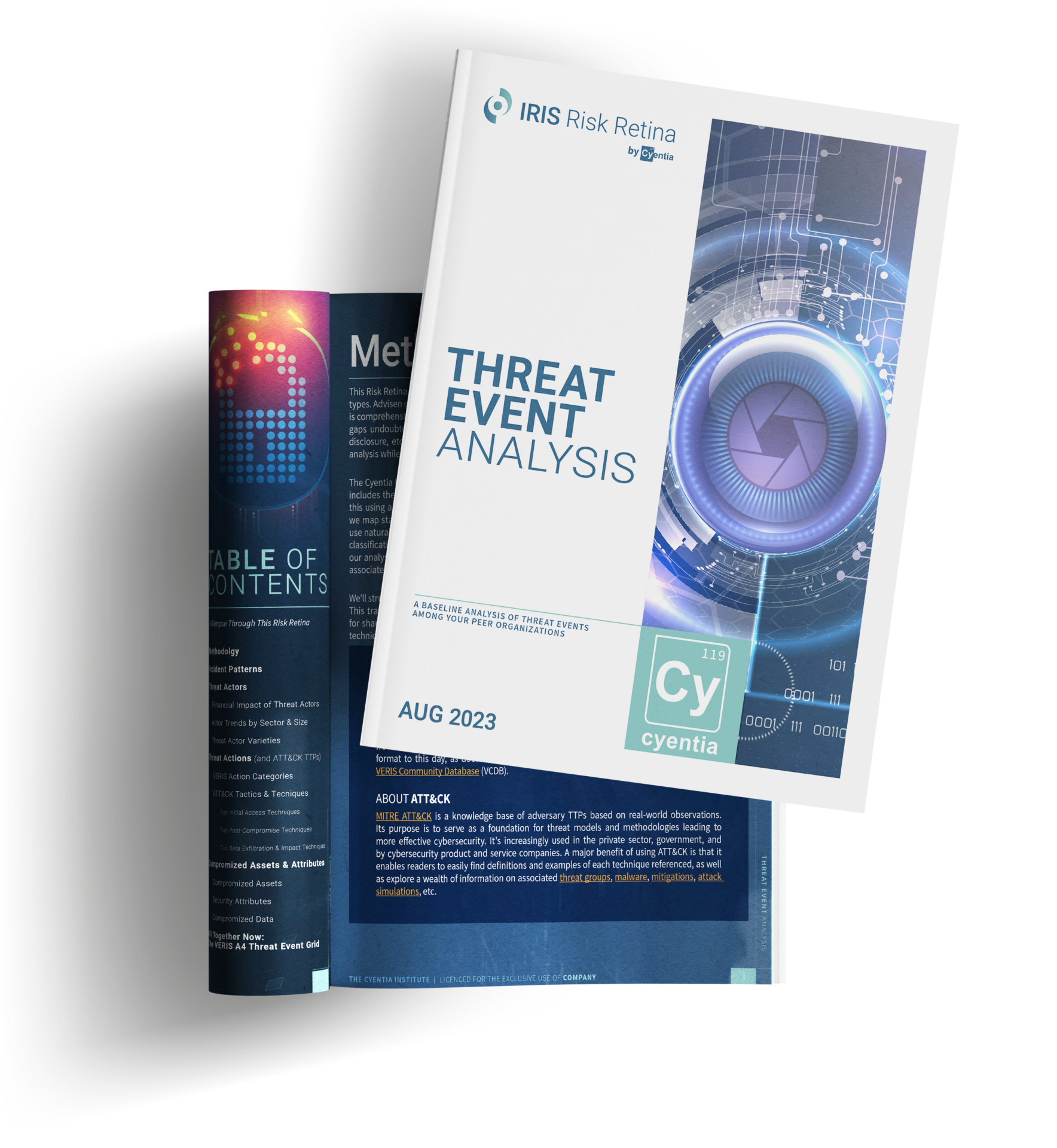
So, how can you leverage this valuable information? The Risk Retina Threat Event Analysis provides you with the data you need to make these informed decisions. This study distills insights from tens of thousands of incidents, offering a deep dive into the world of cybersecurity threats and incidents. Whether you’re a security practitioner, risk manager, or a decision-maker within your organization, this analysis equips you with the knowledge required to develop effective security strategies.
The Synergy: MITRE ATT&CK and Risk Retina Threat Event Analysis
The IRIS Risk Retina Threat Event Analysis is a key tool in the arsenal of cybersecurity professionals. While the MITRE ATT&CK framework provides a broad understanding of tactics and techniques, the IRIS T.E.A spills the tea on incidents. By integrating this tool into your cybersecurity strategy, you can create a robust defense mechanism that not only understands the broader threat landscape but can also respond effectively to real-world incidents.
In the ever-evolving world of cybersecurity, knowledge is power. The IRIS Risk Retina Threat Event Analysis empowers security professionals to stay ahead of cyber threats, mitigate risks, and protect their organizations effectively. As cyber adversaries continue to refine their tactics, organizations must respond with equally sophisticated strategies. With the right tools and insights at your disposal, you can navigate the complex terrain of cybersecurity with confidence and resilience.

